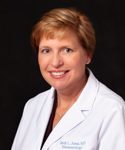
Arthritis and other rheumatic diseases affect more than 46 million adults and 300,000 children in the United States.1-2 With the aging of the U.S. population, the number of adults with rheumatic disease is expected to increase to 67 million by 2030.1 While the demand for rheumatology services is increasing, the supply of practicing rheumatologists is diminishing. The ACR Rheumatology Workforce Study (published earlier this year) predicts that there will be little or no increase in the number of practicing rheumatologists, resulting in a critical shortage of rheumatologists by 2020.3
Establishing collaborative rheumatology practices between rheumatologists, advanced practice nurses (APNs), and physician assistants (PAs) has been identified as one effective strategy to help meet the increased demand for rheumatology services, while maintaining accessible, high-quality care for rheumatology patients. Numerous studies have shown that APNs and PAs provide high-quality, cost-effective patient care and that patients are highly satisfied with the care received from these providers.
Online Learning
Most nurse practitioner and PA educational programs provide little rheumatology training. A 2003 survey of rheumatologists, APNs, and PAs found that the majority of APNs and PAs reported having little to no rheumatology training or skills prior to their first rheumatology position and that rheumatologists spent considerable time providing on-the-job training for their APN and PA colleagues. To assist APNs and PAs in obtaining the knowledge and clinical skills necessary to enter rheumatology practice, the ARHP – in collaboration with the ACR – is developing the Nurse Practitioner and Physician Assistant Post-Graduate Rheumatology Training Program.
This comprehensive, Web-based program (developed by leaders in the field of rheumatology from varied disciplines) will provide APNs and PAs with timely, convenient, self-paced education in rheumatology. The program consists of 19 Web-based modules, organized into core, adult, and pediatric categories. The six core modules include an overview of musculoskeletal structure, function, and inflammation; rheumatic disease classification and framework for clinical decision making; laboratory evaluation; imaging studies; documentation, coding, and practice issues; and therapeutic interventions and resources. There are 10 adult modules and three pediatric modules that provide state-of-the-art information on the diagnosis and management of common rheumatic diseases in adults and children. The program is scheduled to debut in late 2007 or early 2008.
Hands-On Training
A one-day, hands-on course for APNs and PAs is also planned as a companion course to the Web-based program. This practical skills development course will provide training in performing musculoskeletal examinations and common rheumatologic procedures, such as arthrocentesis, intra-articular steroid injections, and trigger-point injections. It will be offered as a pre-conference course, debuting at the 2008 ACR/ARHP Annual Scientific Meeting in San Francisco.
These two new programs will assist APNs and PAs in more rapidly assimilating critical rheumatology knowledge and skills with less required training. This should facilitate more effective and efficient integration of APNs and PAs into collaborative rheumatology practices and ultimately improve access to and quality of care for people with rheumatic and musculoskeletal diseases. The ARHP is proud to add these two educational programs to our portfolio of outstanding educational products.
Karen Kerr is president of the ARHP and a pediatric nurse practitioner at Children’s Hospital of Michigan in Detroit. Contact her via e-mail at [email protected].
References
- Centers for Disease Control and Prevention. Prevalence of doctor-diagnosed arthritis and arthritis-attributable activity limitation, United States, 2003–2005. MMWR Morb Mortal Wkly Rep. 2006;55(40):1089-1092.
- Childhood Arthritis and Rheumatology Research Alliance Fact Sheet, 2006. Available online at: www.carragroup.info/content_dsp.do?pc=fact. Last accessed September 4, 2007.
- Deal CL, Hooker R, Harrington T, et al. The United States rheumatology workforce: Supply and demand, 2005–2025. Arthritis Rheum. 2007;56(3):722-729.

